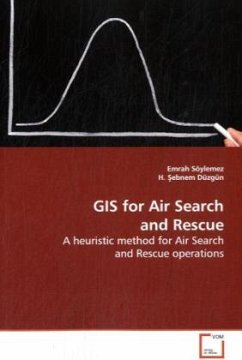Search and Rescue (SAR) operations aim at finding
missing objects with minimum time in a determined
area. Limiting search area is the critical decision-
making part for SAR operations. There are
fundamentally two problems in these operations. The
first problem is assessing highly reliable
probability distribution maps, and the second is
determining the search pattern that sweeps the area
from air as fast as possible.
This book presents use of geographic information
systems (GIS) and multi criteria decision analysis
(MCDA) in an integrated way within the framework of
Search Theory. GIS helps for managing the
geographic data in SAR operation and provide SAR
experts probability maps of missing object based on
MCDA methods. Moreover, in any SAR operation, it is
crucial to determine search pattern. Hence this book
also gives guidelines for designing most appropriate
search pattern through a developed software within
GIS.
missing objects with minimum time in a determined
area. Limiting search area is the critical decision-
making part for SAR operations. There are
fundamentally two problems in these operations. The
first problem is assessing highly reliable
probability distribution maps, and the second is
determining the search pattern that sweeps the area
from air as fast as possible.
This book presents use of geographic information
systems (GIS) and multi criteria decision analysis
(MCDA) in an integrated way within the framework of
Search Theory. GIS helps for managing the
geographic data in SAR operation and provide SAR
experts probability maps of missing object based on
MCDA methods. Moreover, in any SAR operation, it is
crucial to determine search pattern. Hence this book
also gives guidelines for designing most appropriate
search pattern through a developed software within
GIS.




![The Arctic Regions [microform]: Being an Account of the American Expedition in Search of Sir John Franklin, Under the Patronage of Henry Grinnel, Esq. The Arctic Regions [microform]: Being an Account of the American Expedition in Search of Sir John Franklin, Under the Patronage of Henry Grinnel, Esq.](https://bilder.buecher.de/produkte/65/65498/65498917m.jpg)



